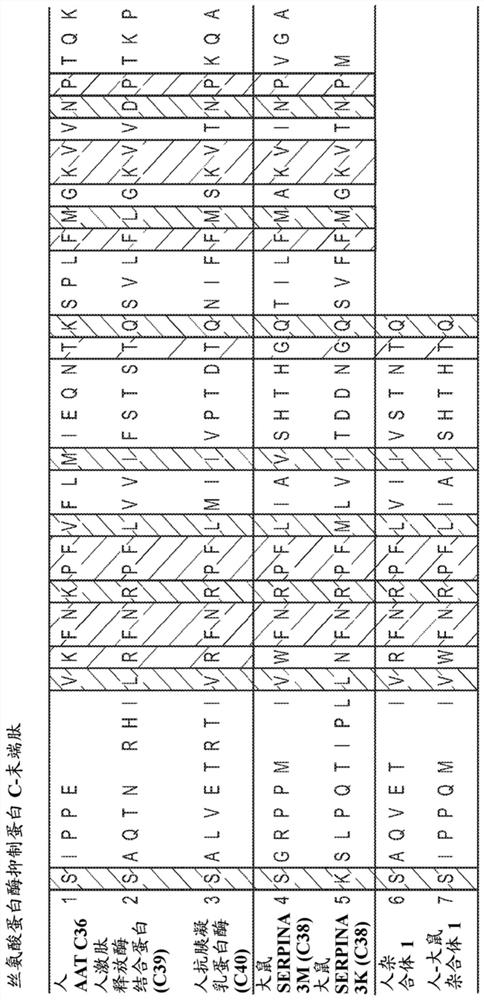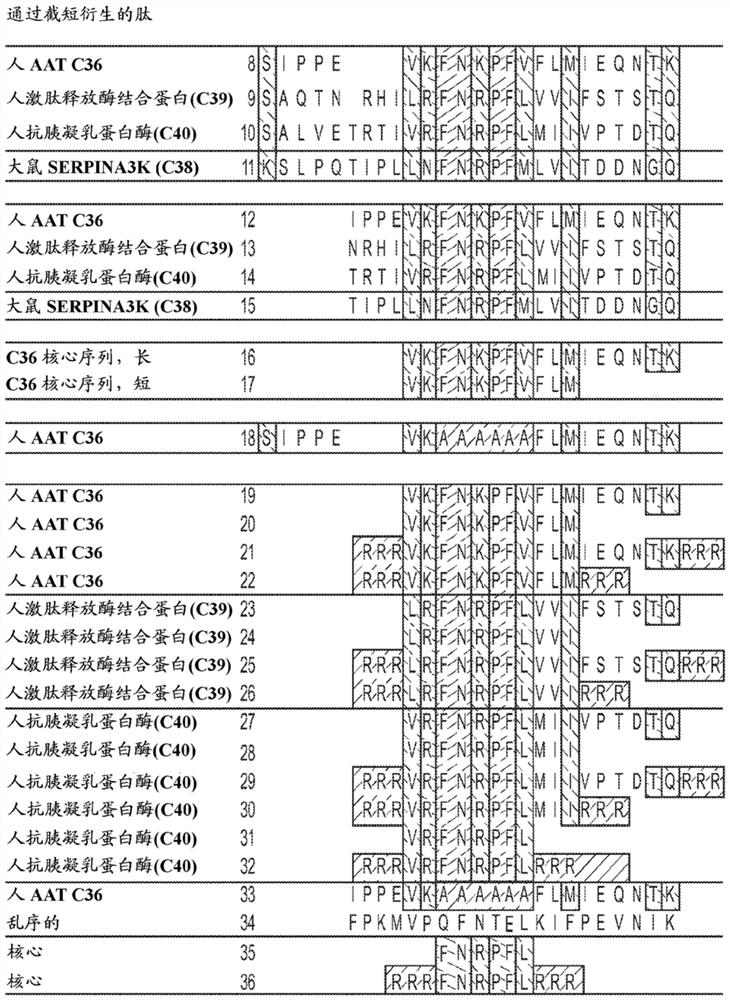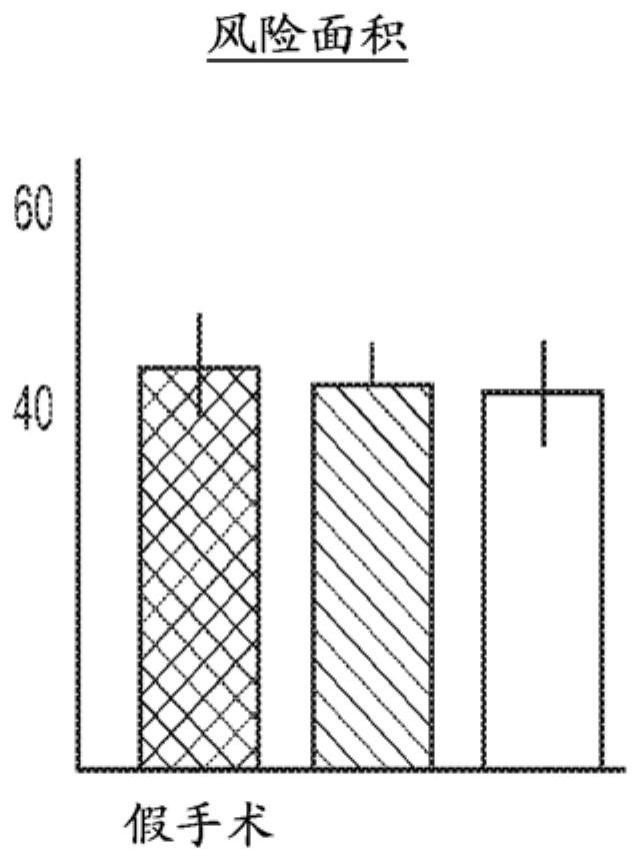method for disease treatment
An amino acid and sequence technology, applied in bone diseases, nervous system diseases, respiratory system diseases, etc., can solve problems such as reducing morbidity and mortality, and missing pathophysiological mechanisms.
- Summary
- Abstract
- Description
- Claims
- Application Information
AI Technical Summary
Problems solved by technology
Method used
Image
Examples
Embodiment 1
[0338] Example 1 - Treatment of Acute Myocardial Infarction Using SP163M Peptide
[0339] The SP16 peptide is a short fragment derived from the circulating serum protein alpha-1-antitrypsin (AAT). The US FDA has approved the use of three α1-antitrypsin products derived from human plasma: Prolastin, Zemaira, and Aralast.
[0340] As described herein, the SP163M peptide contains the reported anti-inflammatory properties of the parent AAT. In pilot clinical studies conducted at Virginia Commonwealth University (VCU), AAT has been initially shown to safely and effectively block the inflammatory response that occurs after AMI. Furthermore, SP163M has shown equal or better anti-inflammatory activity in preclinical models of AMI. Working with researchers at VCU, we rapidly developed SP16 for the treatment of AMI, a major unmet medical need in the United States and worldwide.
[0341] Acute myocardial infarction (AMI) remains a leading cause of morbidity and mortality in the United...
Embodiment 2
[0387] Met was replaced by Nle to improve peptide stability, for example in SEQ ID NO: 57-Ac-Val-Lys-Phe-Asn-Lys-Pro-Phe-Val-Phe-Leu-Nle-Ile-Glu-Gln-Asn- In the peptide of Thr-Lys-NH2 (SEQ ID NO: 57). Oxidizable methionine.
Embodiment 3
[0388] Example 3 - LRP1 mediates SP16-induced cardioprotection
[0389] SP163M was demonstrated herein to bind LRP1 (low density lipoprotein receptor-related protein) and to be an agonist of LRP1 (as shown for parent AAT). It was also shown that blocking LRP1 abolishes the cardioprotective effects of SP163M and AAT.
[0390] introduce
[0391] LRP1 is the receptor responsible for the plasma clearance of SEC (serine protease inhibitory protease complex accumulated during inflammatory responses). Therefore, the role of LRP1 is to prevent and interrupt inflammation. LRP1 may act via direct regulation of key inflammatory pathways; such as NFkB, IRF-3 and AP-1 (eg ERK p42 / p44, p38 and JNK).
[0392] In murine peritoneal macrophages, LRP1 downregulates LPS-driven inflammatory responses through intracellular interaction with IRF-3. In addition, LRP1 regulates inflammatory cytokines, affects phagocytosis and cell migration, and Treg distribution. Serpins, including peptides such ...
PUM
 Login to View More
Login to View More Abstract
Description
Claims
Application Information
 Login to View More
Login to View More - R&D
- Intellectual Property
- Life Sciences
- Materials
- Tech Scout
- Unparalleled Data Quality
- Higher Quality Content
- 60% Fewer Hallucinations
Browse by: Latest US Patents, China's latest patents, Technical Efficacy Thesaurus, Application Domain, Technology Topic, Popular Technical Reports.
© 2025 PatSnap. All rights reserved.Legal|Privacy policy|Modern Slavery Act Transparency Statement|Sitemap|About US| Contact US: help@patsnap.com



